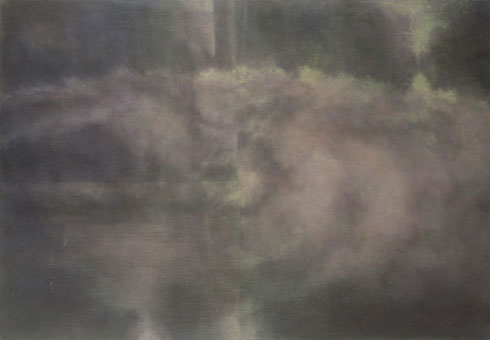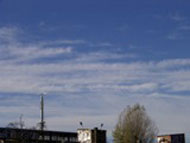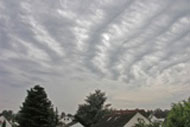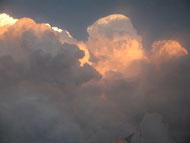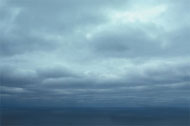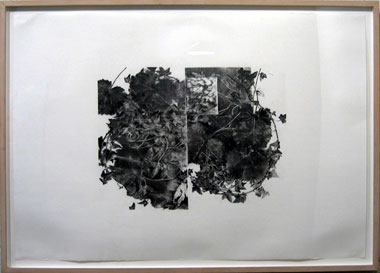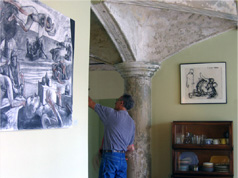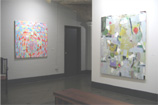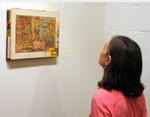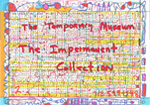
|
|
|
|||||||||
| ||||||||||
This painting exudes (if that’s the right word) gravitas, an ordered calm. Glanced at in passing, it seems like a seamless cloudscape. Looked at more closely it is divided into three sections that are almost but not quite invisibly joined. Classic art opened a window on reality. Modern art since impressionism has closed the window and treated painting as part of a wall, a segment of flat surface. This painting has it both ways and in addition suggests an internal time lapse. I never think of it as a nighttime view, but rather a monochromatic rendering of a daytime sky related to a series of graphite drawings that Martina was working on at the time. It’s not exactly monochromatic; there are violets and greens and a not quite definable black. The painted surface is thin, the paint is rubbed on or maybe rubbed off, but it’s not transparent either; the dark areas are opaque and there is an edge of brushwork on the top of the arc of the clouds. Every inch of this painting is meticulously worked on and constructed, because painting a cloud from life is actually impossible—they change so fast. In Tristes Tropiques, Claude Levi-Strauss gives an excellent reason for describing “those evanescent and ever-renewed forms” (and, by extrapolation, for painting them:) If I could find a language in which to perpetuate these appearances, at once so unstable and so resistant to description, if it were granted to me to be able to communicate to others the phases and sequences of a unique event that would never recur in the same terms, then—so it seemed to me—I should have in one go have discovered the deepest secrets of my profession: however strange and peculiar the experiences to which anthropological research might expose me, there would be none whose meaning and importance I could not eventually make clear to everybody. In attempting to name the clouds that Martina painted I was astonished to learn that it was considered impossible to name them or organize them until 1802 when chemist and amateur meteorologist Luke Howard had the “insight that clouds have many individual shapes but few basic forms.” |
||||||||||
|
||||||||||
|
||||||||||
|
||||||||||
|
||||||||||
1.CIRRUS. Parallel, flexuous,or diverging fibres, extensible in any or all directions. |
||||||||||
|
||||||||||
This site has remarkable pictures and good tips on reading the weather from the clouds. To read in full Claude Levi-Strauss’ description of a sunset (starting on page 65) see this site, which has the full text of Tristes Tropiques. |
||||||||||
| Forward to the next painting in the collection | ||||||||||
| Back to the My Collection home page | ||||||||||
